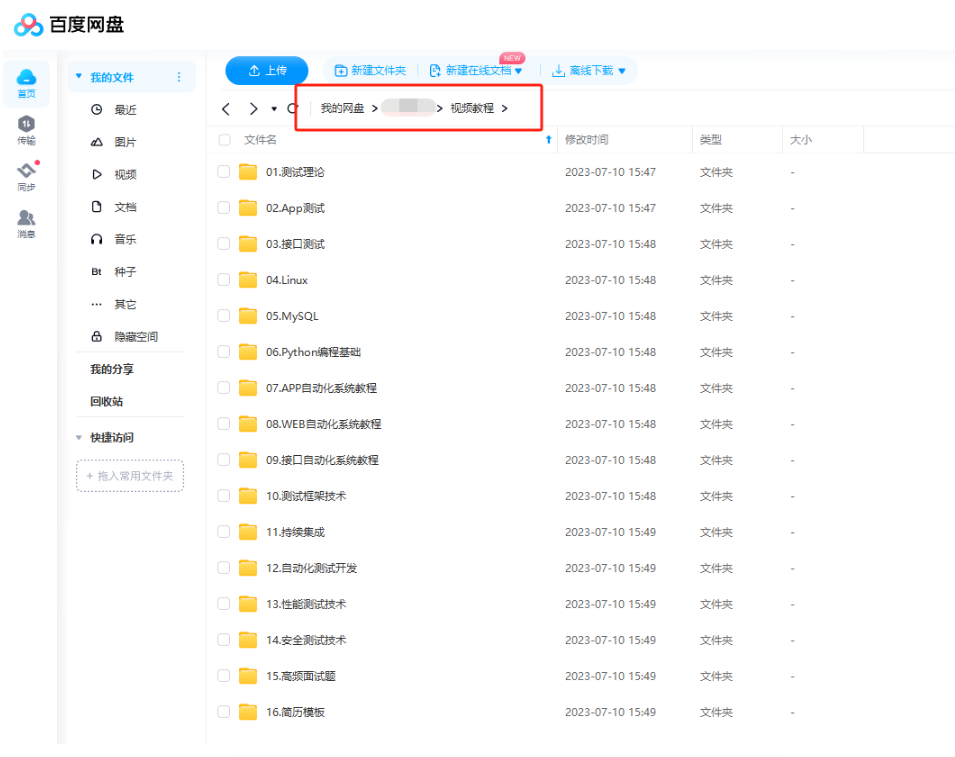| <?xml version="1.0" encoding="UTF-8"?>
<jmeterTestPlan version="1.2" properties="5.0" jmeter="5.3">
<hashTree>
<TestPlan guiclass="TestPlanGui" testclass="TestPlan" testname="{{test_plan_name}}" enabled="true">
<stringProp name="TestPlan.comments">{{comments}}</stringProp>
<boolProp name="TestPlan.functional_mode">false</boolProp>
<boolProp name="TestPlan.tearDown_on_shutdown">true</boolProp>
<boolProp name="TestPlan.serialize_threadgroups">false</boolProp>
<elementProp name="TestPlan.user_defined_variables" elementType="Arguments" guiclass="ArgumentsPanel" testclass="Arguments" testname="用户定义的变量" enabled="true">
<collectionProp name="Arguments.arguments"/>
</elementProp>
<stringProp name="TestPlan.user_define_classpath"></stringProp>
</TestPlan>
<hashTree>{% if hosts %}
<DNSCacheManager guiclass="DNSCachePanel" testclass="DNSCacheManager" testname="DNS缓存管理器" enabled="true">
<collectionProp name="DNSCacheManager.servers"/>
<collectionProp name="DNSCacheManager.hosts">{% for host in hosts %}
<elementProp name="las.secoo.com" elementType="StaticHost">
<stringProp name="StaticHost.Name">{{host.name}}</stringProp>
<stringProp name="StaticHost.Address">{{host.address}}</stringProp>
</elementProp>{% endfor %}
</collectionProp>
<boolProp name="DNSCacheManager.clearEachIteration">false</boolProp>
<boolProp name="DNSCacheManager.isCustomResolver">true</boolProp>
</DNSCacheManager>
<hashTree/>{% endif %} {% if cookies %}
<CookieManager guiclass="CookiePanel" testclass="CookieManager" testname="HTTP Cookie管理器" enabled="true">
<collectionProp name="CookieManager.cookies"/>
<boolProp name="CookieManager.clearEachIteration">{{cookies.clear_each_iteration}}</boolProp>
</CookieManager>
<hashTree/>{% endif %} {% if csv_files %}{% for csv_file in csv_files %}
<CSVDataSet guiclass="TestBeanGUI" testclass="CSVDataSet" testname="{{csv_file.name}}" enabled="true">
<stringProp name="filename">dat/{{csv_file.path}}</stringProp>
<stringProp name="fileEncoding">UTF-8</stringProp>
<stringProp name="variableNames">{{csv_file.varnames}}</stringProp>
<boolProp name="ignoreFirstLine">true</boolProp>
<stringProp name="delimiter">{{csv_file.delimiter}}</stringProp>
<boolProp name="quotedData">false</boolProp>
<boolProp name="recycle">true</boolProp>
<boolProp name="stopThread">false</boolProp>
<stringProp name="shareMode">shareMode.group</stringProp>
</CSVDataSet>
<hashTree/>{% endfor %}{% endif %}
<ResultCollector guiclass="StatVisualizer" testclass="ResultCollector" testname="聚合报告" enabled="true">
<boolProp name="ResultCollector.error_logging">false</boolProp>
<objProp>
<name>saveConfig</name>
<value class="SampleSaveConfiguration">
<time>true</time>
<latency>true</latency>
<timestamp>true</timestamp>
<success>true</success>
<label>true</label>
<code>true</code>
<message>true</message>
<threadName>true</threadName>
<dataType>true</dataType>
<encoding>false</encoding>
<assertions>true</assertions>
<subresults>true</subresults>
<responseData>false</responseData>
<samplerData>false</samplerData>
<xml>false</xml>
<fieldNames>true</fieldNames>
<responseHeaders>false</responseHeaders>
<requestHeaders>false</requestHeaders>
<responseDataOnError>true</responseDataOnError>
<saveAssertionResultsFailureMessage>true</saveAssertionResultsFailureMessage>
<assertionsResultsToSave>0</assertionsResultsToSave>
<bytes>true</bytes>
<sentBytes>true</sentBytes>
<threadCounts>true</threadCounts>
<idleTime>true</idleTime>
</value>
</objProp>
<stringProp name="filename"></stringProp>
</ResultCollector>
<hashTree/>{% for thread_group in thread_groups %}
<ThreadGroup guiclass="ThreadGroupGui" testclass="ThreadGroup" testname="{{thread_group.thread_group_name}}" enabled="{{thread_group.enabled}}">
<stringProp name="TestPlan.comments">{{thread_group.comments}}</stringProp>
<stringProp name="ThreadGroup.on_sample_error">continue</stringProp>
<elementProp name="ThreadGroup.main_controller" elementType="LoopController" guiclass="LoopControlPanel" testclass="LoopController" testname="循环控制器" enabled="true">
<boolProp name="LoopController.continue_forever">false</boolProp>
<intProp name="LoopController.loops">{{thread_group.loops}}</intProp>
</elementProp>
<stringProp name="ThreadGroup.num_threads">{{thread_group.num_threads}}</stringProp>
<stringProp name="ThreadGroup.ramp_time">{{thread_group.ramp_time}}</stringProp>
<boolProp name="ThreadGroup.scheduler">{{thread_group.scheduler}}</boolProp>
<stringProp name="ThreadGroup.duration">{{thread_group.duration}}</stringProp>
<stringProp name="ThreadGroup.delay">{{thread_group.delay}}</stringProp>
<boolProp name="ThreadGroup.same_user_on_next_iteration">false</boolProp>
</ThreadGroup>
<hashTree>{% if thread_group.csv_files %}{% for csv_file in thread_group.csv_files %}
<CSVDataSet guiclass="TestBeanGUI" testclass="CSVDataSet" testname="{{csv_file.name}}" enabled="true">
<stringProp name="filename">dat/{{csv_file.path}}</stringProp>
<stringProp name="fileEncoding">UTF-8</stringProp>
<stringProp name="variableNames">{{csv_file.varnames}}</stringProp>
<boolProp name="ignoreFirstLine">true</boolProp>
<stringProp name="delimiter">{{csv_file.delimiter}}</stringProp>
<boolProp name="quotedData">false</boolProp>
<boolProp name="recycle">true</boolProp>
<boolProp name="stopThread">false</boolProp>
<stringProp name="shareMode">shareMode.group</stringProp>
</CSVDataSet>
<hashTree/>{% endfor %}{% endif %} {% if thread_group.http_samples %}{% for http_sample in thread_group.http_samples %}
<HTTPSamplerProxy guiclass="HttpTestSampleGui" testclass="HTTPSamplerProxy" testname="{{http_sample.request_name}}" enabled="{{http_sample.enabled}}">
<elementProp name="HTTPsampler.Arguments" elementType="Arguments" guiclass="HTTPArgumentsPanel" testclass="Arguments" testname="用户定义的变量" enabled="true">
<collectionProp name="Arguments.arguments">{% if http_sample.request.params %}{% for name, value in http_sample.request.params.items() %}
<elementProp name="{{name}}" elementType="HTTPArgument">
<boolProp name="HTTPArgument.always_encode">false</boolProp>
<stringProp name="Argument.value">{{value}}</stringProp>
<stringProp name="Argument.metadata">=</stringProp>
<boolProp name="HTTPArgument.use_equals">true</boolProp>
<stringProp name="Argument.name">{{name}}</stringProp>
</elementProp>{% endfor %}{% endif %} {% if http_sample.request.data %}{% for name, value in http_sample.request.data.items() %}
<elementProp name="{{name}}" elementType="HTTPArgument">
<boolProp name="HTTPArgument.always_encode">false</boolProp>
<stringProp name="Argument.value">{{value}}</stringProp>
<stringProp name="Argument.metadata">=</stringProp>
<boolProp name="HTTPArgument.use_equals">true</boolProp>
<stringProp name="Argument.name">{{name}}</stringProp>
</elementProp>{% endfor %}{% endif %} {% if http_sample.request.raw_data %}
<elementProp name="" elementType="HTTPArgument">
<boolProp name="HTTPArgument.always_encode">false</boolProp>
<stringProp name="Argument.value">{{http_sample.request.raw_data}}</stringProp>
<stringProp name="Argument.metadata">=</stringProp>
</elementProp>{% endif %}
</collectionProp>
</elementProp>
<stringProp name="HTTPSampler.domain">{{http_sample.request.domain}}</stringProp>
<stringProp name="HTTPSampler.port">{{http_sample.request.port}}</stringProp>
<stringProp name="HTTPSampler.protocol">{{http_sample.request.protocol}}</stringProp>
<stringProp name="HTTPSampler.contentEncoding">{{http_sample.request.encoding}}</stringProp>
<stringProp name="HTTPSampler.path">{{http_sample.request.path}}</stringProp>
<stringProp name="HTTPSampler.method">{{http_sample.request.method}}</stringProp>
<boolProp name="HTTPSampler.follow_redirects">{{http_sample.request.follow_redirects}}</boolProp>
<boolProp name="HTTPSampler.auto_redirects">{{http_sample.request.auto_redirects}}</boolProp>
<boolProp name="HTTPSampler.use_keepalive">{{http_sample.request.use_keepalive}}</boolProp>
<boolProp name="HTTPSampler.DO_MULTIPART_POST">false</boolProp>
<stringProp name="HTTPSampler.embedded_url_re"></stringProp>
<stringProp name="HTTPSampler.connect_timeout">{{http_sample.request.connect_timeout}}</stringProp>
<stringProp name="HTTPSampler.response_timeout">{{http_sample.request.response_timeout}}</stringProp>
</HTTPSamplerProxy>
<hashTree>{% if http_sample.request.headers %}
<HeaderManager guiclass="HeaderPanel" testclass="HeaderManager" testname="HTTP信息头管理器" enabled="true">
<collectionProp name="HeaderManager.headers">{% for name, value in http_sample.request.headers.items() %}
<elementProp name="" elementType="Header">
<stringProp name="Header.name">{{name}}</stringProp>
<stringProp name="Header.value">{{value}}</stringProp>
</elementProp>{% endfor %}
</collectionProp>
</HeaderManager>
<hashTree/>{% endif %} {% if http_sample.csv_files %}{% for csv_file in http_sample.csv_files %}
<CSVDataSet guiclass="TestBeanGUI" testclass="CSVDataSet" testname="CSV 数据文件设置" enabled="true">
<stringProp name="delimiter">{{csv_file.delimiter}}</stringProp>
<stringProp name="fileEncoding">UTF_8</stringProp>
<stringProp name="filename">dat/{{csv_file.path}}</stringProp>
<boolProp name="ignoreFirstLine">true</boolProp>
<boolProp name="quotedData">false</boolProp>
<boolProp name="recycle">true</boolProp>
<stringProp name="shareMode">shareMode.group</stringProp>
<boolProp name="stopThread">false</boolProp>
<stringProp name="variableNames">{{csv_file.varnames}}</stringProp>
</CSVDataSet>
<hashTree/>{% endfor %}{% endif %} {% if http_sample.validate %}{% for assertion in http_sample.validate %}
<ResponseAssertion guiclass="AssertionGui" testclass="ResponseAssertion" testname="响应断言" enabled="true">
<collectionProp name="Asserion.test_strings">{% if assertion.strings %}{% for string in assertion.strings %}
<stringProp name="97">{{string}}</stringProp>{% endfor %}{% endif %}
</collectionProp>
<stringProp name="Assertion.custom_message"></stringProp>
<stringProp name="Assertion.test_field">Assertion.{{assertion.test_field}}</stringProp>
<boolProp name="Assertion.assume_success">false</boolProp>
<intProp name="Assertion.test_type">{{assertion.test_type}}</intProp>
</ResponseAssertion>
<hashTree/>{% endfor %}{% endif %}
<ResultCollector guiclass="ViewResultsFullVisualizer" testclass="ResultCollector" testname="察看结果树" enabled="true">
<boolProp name="ResultCollector.error_logging">false</boolProp>
<objProp>
<name>saveConfig</name>
<value class="SampleSaveConfiguration">
<time>true</time>
<latency>true</latency>
<timestamp>true</timestamp>
<success>true</success>
<label>true</label>
<code>true</code>
<message>true</message>
<threadName>true</threadName>
<dataType>true</dataType>
<encoding>false</encoding>
<assertions>true</assertions>
<subresults>true</subresults>
<responseData>false</responseData>
<samplerData>false</samplerData>
<xml>false</xml>
<fieldNames>true</fieldNames>
<responseHeaders>false</responseHeaders>
<requestHeaders>false</requestHeaders>
<responseDataOnError>false</responseDataOnError>
<saveAssertionResultsFailureMessage>true</saveAssertionResultsFailureMessage>
<assertionsResultsToSave>0</assertionsResultsToSave>
<bytes>true</bytes>
<sentBytes>true</sentBytes>
<url>true</url>
<threadCounts>true</threadCounts>
<idleTime>true</idleTime>
<connectTime>true</connectTime>
</value>
</objProp>
<stringProp name="filename"></stringProp>
</ResultCollector>
<hashTree/>
</hashTree>{% endfor %}{% endif %} {% if thread_group.dubbo_samples %} {% for dubbo_sample in thread_group.dubbo_samples %}
<io.github.ningyu.jmeter.plugin.dubbo.sample.DubboSample guiclass="io.github.ningyu.jmeter.plugin.dubbo.gui.DubboSampleGui" testclass="io.github.ningyu.jmeter.plugin.dubbo.sample.DubboSample" testname="{{dubbo_sample.request_name}}" enabled="{{dubbo_sample.enabled}}">
<stringProp name="FIELD_DUBBO_REGISTRY_PROTOCOL">{{dubbo_sample.registry.type}}</stringProp>
<stringProp name="FIELD_DUBBO_REGISTRY_GROUP">{{dubbo_sample.registry.group}}</stringProp>
<stringProp name="FIELD_DUBBO_RPC_PROTOCOL">dubbo://</stringProp>
<stringProp name="FIELD_DUBBO_ADDRESS">{{dubbo_sample.registry.address}}</stringProp>
<stringProp name="FIELD_DUBBO_TIMEOUT">{{dubbo_sample.dubbo.timeout}}</stringProp>
<stringProp name="FIELD_DUBBO_VERSION"></stringProp>
<stringProp name="FIELD_DUBBO_RETRIES">{{dubbo_sample.dubbo.retries}}</stringProp>
<stringProp name="FIELD_DUBBO_GROUP">{{dubbo_sample.dubbo.group}}</stringProp>
<stringProp name="FIELD_DUBBO_CONNECTIONS">{{dubbo_sample.dubbo.connections}}</stringProp>
<stringProp name="FIELD_DUBBO_LOADBALANCE">{{dubbo_sample.dubbo.load_balance}}</stringProp>
<stringProp name="FIELD_DUBBO_ASYNC">sync</stringProp>
<stringProp name="FIELD_DUBBO_CLUSTER">{{dubbo_sample.dubbo.cluster}}</stringProp>
<stringProp name="FIELD_DUBBO_INTERFACE">{{dubbo_sample.dubbo.service}}</stringProp>
<stringProp name="FIELD_DUBBO_METHOD">{{dubbo_sample.dubbo.method}}</stringProp>
<intProp name="FIELD_DUBBO_METHOD_ARGS_SIZE">1</intProp>{% for param in dubbo_sample.dubbo.params %}
<stringProp name="FIELD_DUBBO_METHOD_ARGS_PARAM_TYPE1">{{param.type}}</stringProp>
<stringProp name="FIELD_DUBBO_METHOD_ARGS_PARAM_VALUE1">{{param.value}}</stringProp>{% endfor %}
<intProp name="FIELD_DUBBO_ATTACHMENT_ARGS_SIZE">0</intProp>
<stringProp name="FIELD_DUBBO_CONFIG_CENTER_PROTOCOL"></stringProp>
<stringProp name="FIELD_DUBBO_CONFIG_CENTER_GROUP"></stringProp>
<stringProp name="FIELD_DUBBO_CONFIG_CENTER_NAMESPACE"></stringProp>
<stringProp name="FIELD_DUBBO_CONFIG_CENTER_USER_NAME"></stringProp>
<stringProp name="FIELD_DUBBO_CONFIG_CENTER_PASSWORD"></stringProp>
<stringProp name="FIELD_DUBBO_CONFIG_CENTER_ADDRESS"></stringProp>
<stringProp name="FIELD_DUBBO_CONFIG_CENTER_TIMEOUT"></stringProp>
<stringProp name="FIELD_DUBBO_REGISTRY_USER_NAME"></stringProp>
<stringProp name="FIELD_DUBBO_REGISTRY_PASSWORD"></stringProp>
<stringProp name="FIELD_DUBBO_REGISTRY_TIMEOUT"></stringProp>
</io.github.ningyu.jmeter.plugin.dubbo.sample.DubboSample>
<hashTree>{% if dubbo_sample.dubbo.headers %}
<HeaderManager guiclass="HeaderPanel" testclass="HeaderManager" testname="HTTP信息头管理器" enabled="true">
<collectionProp name="HeaderManager.headers">{% for name, value in dubbo_sample.dubbo.headers.items() %}
<elementProp name="" elementType="Header">
<stringProp name="Header.name">{{name}}</stringProp>
<stringProp name="Header.value">{{value}}</stringProp>
</elementProp>{% endfor %}
</collectionProp>
</HeaderManager>
<hashTree/>{% endif %} {% if dubbo_sample.validate %} {% for assertion in dubbo_sample.validate %}
<ResponseAssertion guiclass="AssertionGui" testclass="ResponseAssertion" testname="响应断言" enabled="true">
<collectionProp name="Asserion.test_strings">{% if assertion.strings %}{% for string in assertion.strings %}
<stringProp name="97">{{string}}</stringProp>{% endfor %}{% endif %}
</collectionProp>
<stringProp name="Assertion.custom_message"></stringProp>
<stringProp name="Assertion.test_field">Assertion.{{assertion.test_field}}</stringProp>
<boolProp name="Assertion.assume_success">false</boolProp>
<intProp name="Assertion.test_type">{{assertion.test_type}}</intProp>
</ResponseAssertion>{% endfor %} {% endif %}
<hashTree/>{% endfor %}{% endif %} {% endfor %}
</hashTree>
</hashTree>
</hashTree>
</jmeterTestPlan>
| 






















 274
274

 被折叠的 条评论
为什么被折叠?
被折叠的 条评论
为什么被折叠?








